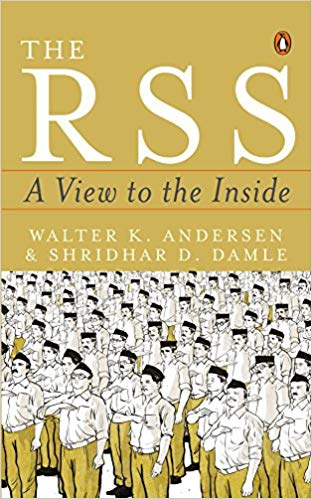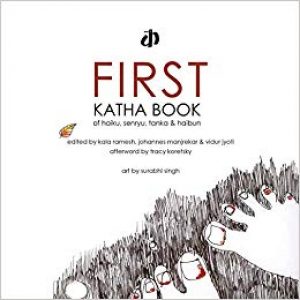Though the RSS was established in 1925, it had its share of ups and downs, particularly after independence when the organisation began to be looked at like a pariah. Well, Nathuram Godse, who assassinated Mahatma Gandhi, was a former member. Other developments also led to the RSS being looked upon as a threat by the then dominant political party. However, like the proverbial phoenix, the RSS has not only risen in the past two decades, but evolved considerably. And, it is this evolution which is the focus of The RSS: A View to the Inside.
It is natural for people to be interested in the activities of the RSS today. After all, the ruling party, the BJP is a political affiliate. Indeed, one of the major concerns of the book is also to explore the relationship between the RSS and the BJP, in the context of changing times. The authors are not new to the RSS. Their first book, The Brotherhood In Saffron: The Rashtriya Swayamsevak Sangh And Hindu Revivalism, published in 1987 also explored the Sangh. Now, they build on that information and present the bigger picture, thirty years hence.
The authors focus on how RSS is placed in the context of today. As they put it, “The India of the twenty-first century is radically different from the India of the past and that has had an impact on the RSS, on both its membership and its policy orientation”. Hence the book seeks to explore this evolution against the backdrop of a changing India.
The book consequently discusses “the willingness of some senior figures to reshape the Sangh, ideologically and organisationally, to win mass appeal in a changing India”
The affiliate story
The book provides a glimpse into how the decision making of the RSS takes place in view of the fact that it has many affiliates often with opposing ideologies. Indeed, this is a strand that appears all through the book in the varied chapters, each of which focuses on a specific area. The treatment of conflicting views within the parivar has been described in an interesting and lucid manner. For example, the path of FDI liberalisation is a contentious issue, with the government clearly supporting it and the BMS, an RSS affiliate labour group as well as the SJM (a national lobby advocating economic self-sufficiency, again set up with the help of the RSS), opposing it.
It explores the reasons why, despite policy differences, the RSS and its affiliates have displayed remarkable cohesiveness. What are the specific systems and values in place that ensures this? The authors take a detailed look at the growing affiliates of the RSS. Today, they reflect a growing diversity and thereby also a conflicting interest within the RSS. Understandably, this presents new challenges to the RSS as well. While it has avoided destructive factionalism within its affiliates, there is a well-run machinery behind it that ensures the same. The book discusses briefly how the sangh manages this and how this could continue given the constantly changing social and political scenario in the country.
The RSS: a holistic view
There are many aspects of the RSS and the through different chapters the book attempts to present a holistic chapter. While the affiliates and the interrelationships of the different affiliates with the RSS features strongly in the content, the book also studies the emergence and current status of the RSS on other issues. It gleans over the role of the group overseas. The chapter on “Indianising Education” talks about the foray of the RSS into education through affiliate Vidya Bharati. It discusses the links with the Muslim Rashtriya Manch which is an experiment in including Muslims within the RSS fold, the issue of Jammu and Kashmir, the stand of RSS on China (and how it sees BJPs approach to Indo-China relations), the contentious ideology of ghar wapsi and cow protection and the dilemma of Ayodhya. Through select case studies the authors analyse the change in the sangh and its evolution. The book also attempts to address some vital questions such as the meaning of hindutva according to the RSS.
This book would be of interest to those interested in knowing inside stories of what really makes huge social and political groups survive, thrive and grow. The academic orientation of the book and the fact that it is steeped in research adds to the authenticity. It is also a book that has a wealth of information on the RSS itself, including many important nuggets that may not necessarily be common knowledge.
The book, in my opinion presents a picture of the RSS as a huge family with several branches and affiliates, where, intra-parivar coordination committees “serve as a forum where the participants can sort out differences behind closed doors and work out compromises rather than take their disagreements to the press and to the streets”.
Academic inputs
The RSS: A View to the Inside is an academic account supported by references and written after a scientific scrutiny. It is also peppered with personal observations, independent research and case studies to support what the authors purport.
It relies on several references and case studies and draws from recent news events (such as post 2014 general elections where BJP emerged as the winning party). For example, the chapter describing the increased involvement of the RSS in policy making analyses minutely the speech made by Bhagwat on Vijayadashami for clues about the RSS views on crucial policy matters. Or, it discusses the involvement of the RSS in education by talking about steps taken by the HRD ministry for the revamping of the Indian education system so that the essentials of Indian culture are reflected in curriculum of schools across the country.
In all….
The RSS: A View to the Inside presents the RSS as an agile organisation that has moved with the times and increased its reach within the Indian society through a well-managed system of affiliates. It presents a comprehensive story of the evolution of the RSS since inception in the context of key issues that matter to our country.
The authors play more of a descriptive role, occasionally casting a critical eye on the issues they discuss. The RSS: A View to the Inside, will introduce interested readers to the inner workings of an organisation that is growing in size and reach.
Title: The RSS: A View to the Inside.
Authors: Walter K Andersen and Shridhar D Damle
Publisher: Penguin
Genre:Non-fiction





